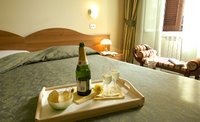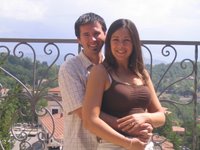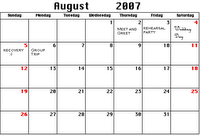
Casalvieri is an ancient village tucked away on top of a mountain. It’s defined by old and narrow cobblestone roads, antique houses clustered together to create a feeling of community and intimacy. One butcher, two small cafés where everyone gathers in time of celebration or just for some small talk after dinner, a small romantic restaurant nestled in a cave with the terrace overlooking more mountains, an old wood oven pizza place started 4 generations ago where every one goes at 2,3,4 in the morning after the bar or the café ( I honestly believe it’s the best pizza in the world ), a centre square situated on a cliff where you have the superb view of mountains and other small villages tucked away on their peaks and where the sunset is utterly stunning. It’s in this village that people enjoy the simplicity of life and focus on the important things; family, friends, love, nature and relaxation. This village holds so many childhood memories ( and now many new ones for both of us ) and till this day remains our place of pure ‘zen’, away from any stresses or dilemmas. It’s our paradise ;) It was here that we were engaged, and here where we will begin our life together. Dreams really do come true...
Casalvieri belongs to the province of Frosinone ( located in the LAZIO region ) and is 62 kilometers far from Frosinone, that is the Chief Town of the province. It has a population of 3.211 inhabitants (Casalvierani) and it rises 380 metres above the sea level.
Adjacent Towns
To the east: Alvito, Atina; to the north: Vicalvi; to the west: Arpino, Fontechiari; to the south: Casalattico
Codes:
Zip Code -03034
Phone Prefix- (+39) 0776
VICALVI, ITALY
Our house is located in the small village of Vicalvi, only a few minutes from Casalvieri, where my grandfather Mario was born. It too has much history and its own charm.
Castled on high ground that dominates the Western end of the Valley of Comino, Vicalvi is an ancient center of Samnite origin. Ancient Cominium has been recorded at some length, but the research on more recent history in the Comino Valley is lacking. Following Roman occupation, Vicalvi was dominated by the Longobardi until 856, under whose rule the Abbey of Montecassino was built, about 30 km South of Vicalvi. Vicalvi is built on a rock outcropping, its profile dominated by the imposing massive structure of the longobardo castle of the XII century. In the XVI century, during the war for dominance of the Italian peninsula, this impregnable fortress housed the troops of emperor Charles V during battle against Francis, the king of France. Its name derives from "Vicus Albus" that is white village, for the characteristic shade of its native sand.
The CASTLE of VICALVI
Not much is known for certain about the Vicalvi castle, first recorded during the age of Frederick II and the Normans in the 11th and 12th centuries. Situated on a hill, a rocky spur at more than 600 m. in elevation, the vantage point surveys all of the Comino Valley. It is recognizable by a red cross painted during the Second World War when German troops transformed it into a field hospital.
The Lombard (Longobard, "Long Beard") castle is a polygonal plan, built by Phillip I Colonna on the rock outcropping where there was once an ancient Roman acropolis. The stucture is now totally abandoned. Upon entry through the main gate, it is possible to admire a lavatory suspended up on a wall, one of the few examples present in Ciociaria. At the East side is a tower that is situated at a point somewhat higher than the main castle. On the walkway of the wall it is possible to view the entire Comino Valley. In the rooms on the ground level it is still possible to view the remains of frescoes, many of which were completely frescoed, probably in the 15th and 16th centuries.
In the 11th century Abbot Oderisius I of Palearia ordered towers and walls to be built to defend the monks and farmers, and in the plain started the development of salt mines. In 1165 Abbot Oderisius II greatly improved the abbey and established it as a great center of the economy and culture. In the year 1000 a certain Oderisius was master of the castle. It served as a border fortress. The people of the "Terra Santa" (Sacred Land) inhabited the castle as late as 1187. It was attacked and destroyed in 1191 by Enrico of Hohenstanfen. In 1349 it was again damaged, this time by an earthquake.
In the following years it was rebuilt and expanded to include certain manufacturing industries. In 1600 the chronicles again note the presence of a very strong fortress, high and impregnable, clearly evident in today's ruins.
It has been an effective fortress in the time of war. One refugee here was Charles V, king of Spain with his troops during the battle for the conquest of Italy in the 1520's against Francis I, King of France.
It is possible to visit the complex by asking information at the Commune of Vicalvi at the telephone number: 0776.506476. The castle is a destination for tourists and mostly foreign visitors who visit during summer and return for the local festivities. From the walls, a panorama can be admired that offers a view of farms, fields, forests, mountains and the surrounding country of the Valley, including, just below the walls, the ancient city of Vicalvi, now abandoned.
-Population: ca.800 inhabitants
- Zip/postal code: 03030
- Phone Area Code: 0776
More information at http://www.endex.com/gf/family/vicalvi/vicalvi.html
This is a very useful site for city maps of the area. Just type in the city name and zoom in.
http://mappe.alice.it










